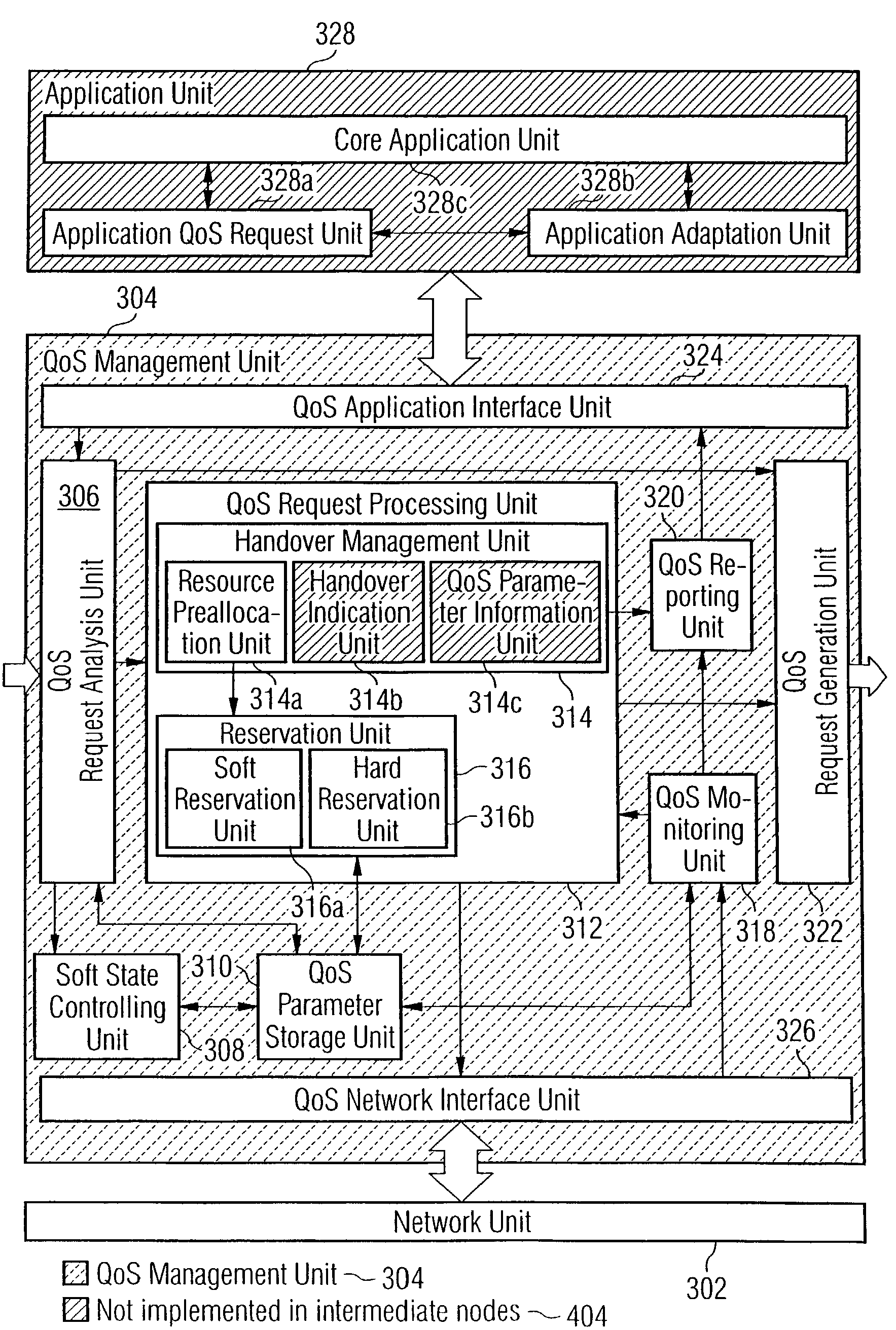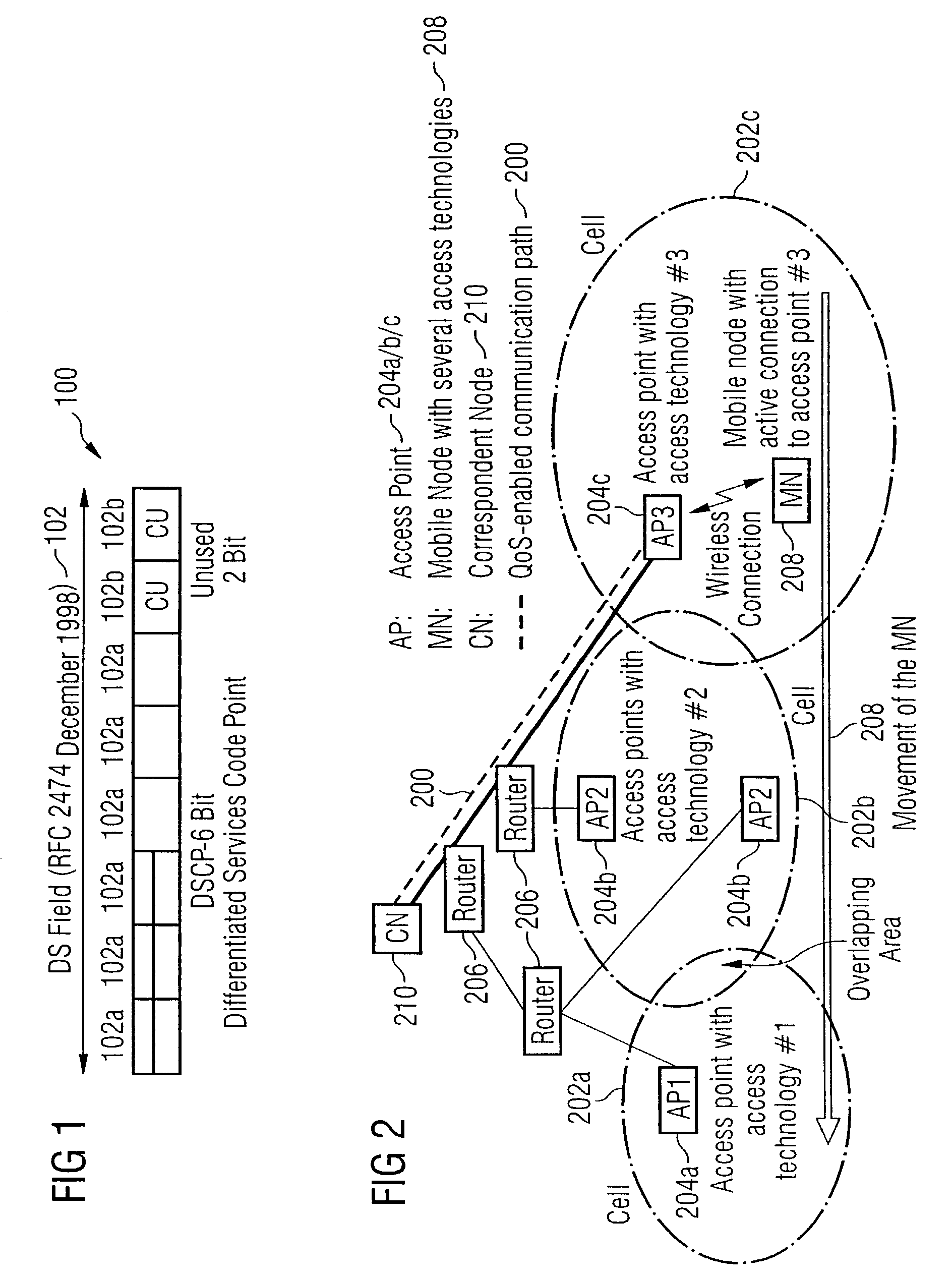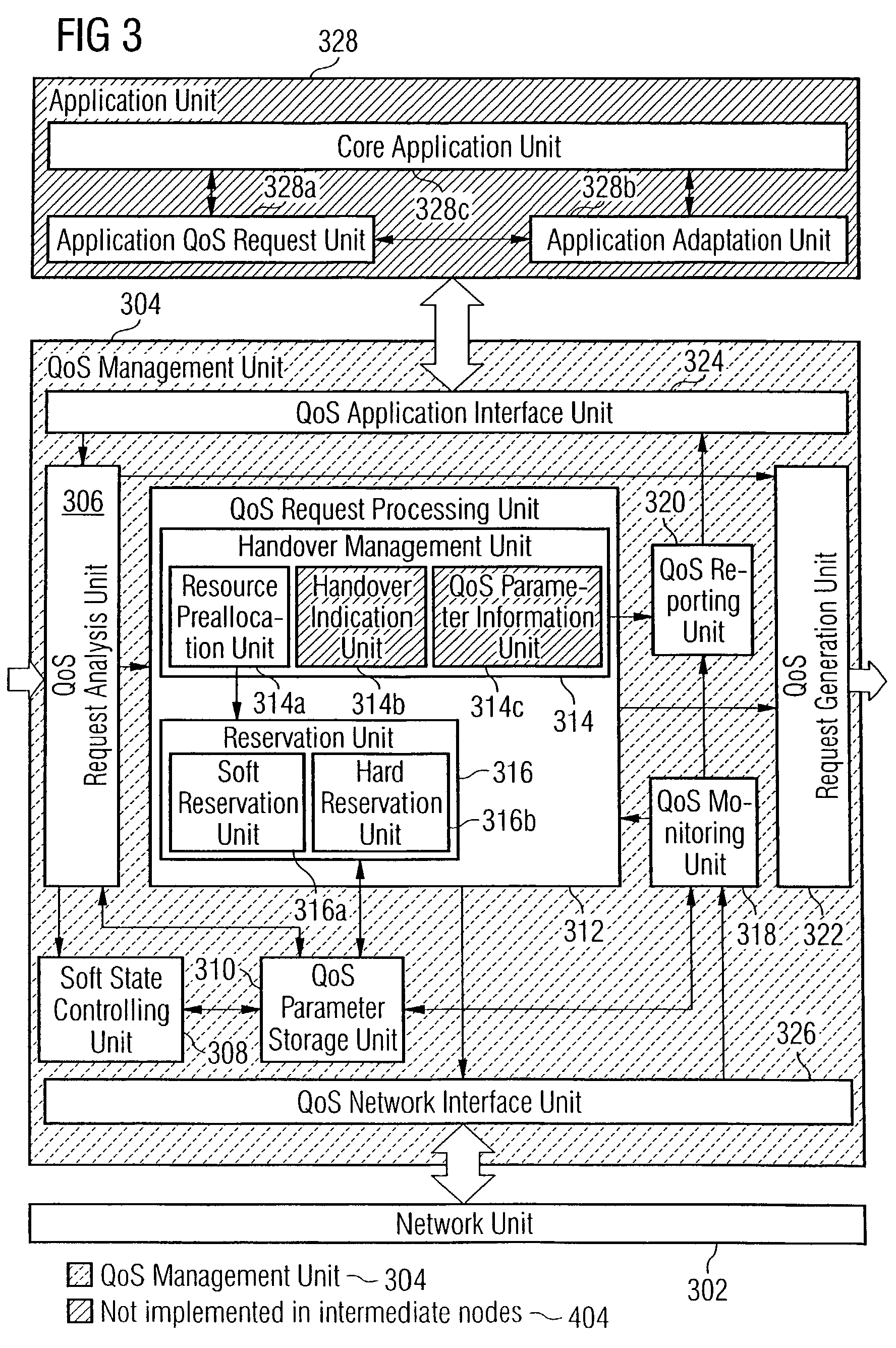Adaptive quality-of-service reservation and pre-allocation for mobile systems
a mobile system and reservation technology, applied in the field of qos management, can solve the problems of affecting the availability of mobile systems, etc., and achieves the effect of reducing the cost of releasing resources and reducing the complexity of the releasing of resources
- Summary
- Abstract
- Description
- Claims
- Application Information
AI Technical Summary
Benefits of technology
Problems solved by technology
Method used
Image
Examples
Embodiment Construction
[0091]In the following, the preferred embodiment of the underlying invention as depicted in FIGS. 1 to 34 shall be explained in detail. The meaning of the symbols designated with reference signs in FIGS. 1 to 34 can be taken from Table 4.
[0092]The proposed QoS management unit 304 as depicted in FIG. 3 provides the functionality to represent a QoS model being able to fulfill the requirements of mobile users described above. As can be taken from Table 1, each sub-unit of said QoS management unit 304 may comprise hardware or software elements.
[0093]The proposed QoS management unit 304 has to be implemented on all nodes along a QoS-enabled communication path 200 between a MN 208 accessed by different technologies and a CN 210 as depicted in FIG. 2 in order to get the full support from the underlying QoS model.
[0094]In the following, it shall be assumed that the intermediate nodes 404 do not comprise any integrated application unit 328. Due to this fact, the intermediate nodes 404 as dep...
PUM
 Login to View More
Login to View More Abstract
Description
Claims
Application Information
 Login to View More
Login to View More - R&D
- Intellectual Property
- Life Sciences
- Materials
- Tech Scout
- Unparalleled Data Quality
- Higher Quality Content
- 60% Fewer Hallucinations
Browse by: Latest US Patents, China's latest patents, Technical Efficacy Thesaurus, Application Domain, Technology Topic, Popular Technical Reports.
© 2025 PatSnap. All rights reserved.Legal|Privacy policy|Modern Slavery Act Transparency Statement|Sitemap|About US| Contact US: help@patsnap.com



